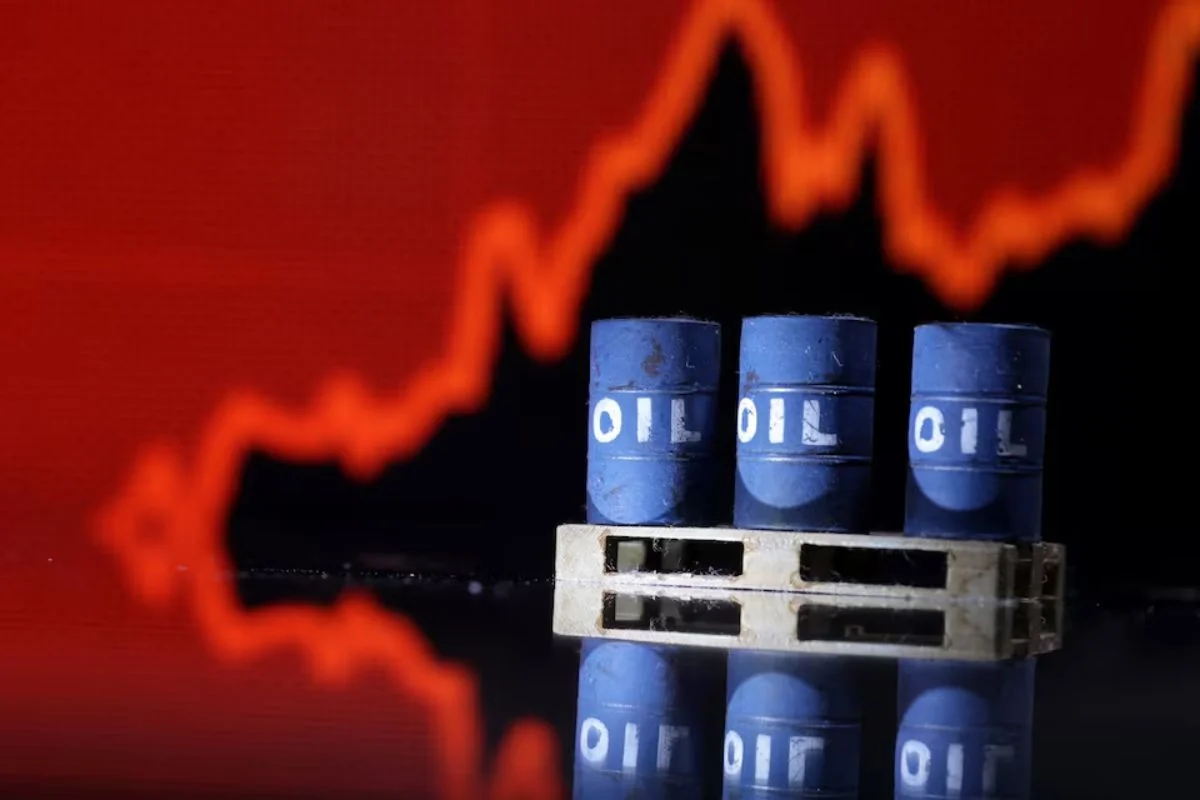Oil Holds Steady After Unexpected US Stock: Oil prices defy expectations after a surprising drop in US stocks. This resilience showcases the market’s robust nature, hinting at potential growth despite recent inventory twists. Geopolitical tensions and the Federal Reserve’s positive outlook further fuel this stability. The unexpected stock decrease acts as a catalyst for oil prices to hold firm amidst uncertainty, emphasizing the intricate balance of global factors shaping the oil market. Keep your eye on how these developments continue to influence the oil industry’s landscape.
Oil Prices Remain Steady Amid Supportive Factors
Against a backdrop of supportive factors, oil prices have managed to maintain their stability in the face of recent market fluctuations. The unforeseen decrease in U.S. crude stockpiles has unquestionably provided a strong pillar of support for oil prices, surprising analysts and investors alike. This unforeseen turn of events has showcased the resilience of the oil market, demonstrating its ability to defy conventional expectations.
The Federal Reserve’s unwavering commitment to its significant rate cut outlook has also played a vital role in bolstering oil prices. Investors have found reassurance in the Fed’s stance, which has helped instill confidence in the market and prevent any drastic downward spirals. The combination of these factors has created a sense of stability and assurance in the oil market, shielding it from the worst effects of recent uncertainties.
As oil prices continue to hold steady in the face of various challenges, it is evident that a strong foundation has been laid for future growth and resilience. The market’s ability to weather unexpected developments is a proof of its underlying strength and potential for long-term stability.
ALSO READ: Oil Prices Soar on Surging US Fuel Demand Amid Lingering Supply Worries
Factors Supporting Oil Prices
Surprisingly, various influential factors are currently bolstering oil prices in the global market.
- Unexpected drawdowns in U.S. crude inventories: This unexpected decrease in stockpiles has instilled confidence in the market, indicating a potential increase in demand or a reduction in supply.
- Geopolitical tensions between Russia and Ukraine: The ongoing conflicts have disrupted Russian refining capacity, raising concerns about global petroleum supplies and driving up crude prices.
- Optimism from the U.S. Federal Reserve: The decision to maintain interest rates has sparked hope for lower rates, which could stimulate economic growth and subsequently boost oil sales.
- Supply disruptions: Any hindrance to the supply chain, whether due to geopolitical tensions or natural disasters, tends to elevate oil prices as markets anticipate potential shortages.
- Market speculation: Traders and investors are actively speculating on future oil prices based on a combination of geopolitical events, economic indicators, and supply-demand dynamics.
These factors, along with market speculation and the intricacies of supply and demand, are currently playing a significant role in supporting oil prices globally.
Economic Developments and Market Sentiment
Reflecting the shifting tides of global economic conditions, Germany’s economy exhibited signs of a gradual rebound in March. A preliminary survey highlighted the nearing stabilization of business activity in the service sector, suggesting a positive development in one of Europe’s economic powerhouses. This hints at a potential resurgence in the region’s economic health, which could have far-reaching implications for global markets.
As Germany’s economy shows resilience in the face of previous stagnation, investors are likely to take note and adjust their strategies accordingly. These economic developments are not isolated but are part of a broader narrative of recovery and growth in key sectors worldwide.
Market sentiment, influenced by such indicators, plays a pivotal role in shaping investment decisions and commodity prices, including oil. The news of Germany’s improving economic outlook adds a layer of optimism to the market sentiment, potentially bolstering confidence and stability in various financial sectors.
Investors are advised to monitor these developments closely, as they could signal a turning point in the current economic landscape.
News in Brief
Oil prices defy expectations, holding steady after an unexpected drop in US crude inventories. This resilience, fueled by geopolitical tensions and the Federal Reserve’s positive outlook, showcases the market’s robust nature. The unforeseen stock decrease acts as a catalyst for stability, highlighting the intricate balance of global factors shaping the oil market. Meanwhile, Germany’s improving economic outlook hints at broader recovery, influencing market sentiment and commodity prices, including oil. Investors are advised to monitor these developments closely for potential shifts in the economic landscape.
Our Reader’s Queries
Q. Will crude oil increase or decrease?
A. Our projections anticipate a decline in OPEC+ crude oil production, dipping from 37.1 million barrels per day (b/d) in 2023 to 36.4 million b/d in 2024. However, a reversal is on the horizon for 2025, with OPEC+ output forecasted to rebound, averaging 37.2 million b/d.
Q. How crude oil inventories affect USD?
A. When crude inventories surge beyond forecasts, it signals subdued demand, spelling bearish implications for crude prices. Similarly, if inventory declines fall short of expectations, it suggests weakening demand dynamics. Conversely, if the rise in crude inventories falls below projections, it points to robust demand, fostering a bullish sentiment for crude prices.
Q. Will oil continue to fall?
A. J.P. Morgan Research anticipates stability in Brent oil prices throughout 2024, following a decline in the previous year. Their forecast remains unchanged since June, with Brent oil expected to average $83 per barrel in 2024. Looking ahead to 2025, the forecast suggests a slight downtrend, with prices projected to edge down by approximately 10%.
Q. What is the prediction for crude oil inventories?
A. Our latest projections indicate a potential decline of 0.9 million barrels per day (b/d) in global oil inventories during the second quarter of 2024. This adjustment comes after our previous forecast, which anticipated inventories to hold steady during the same period.



